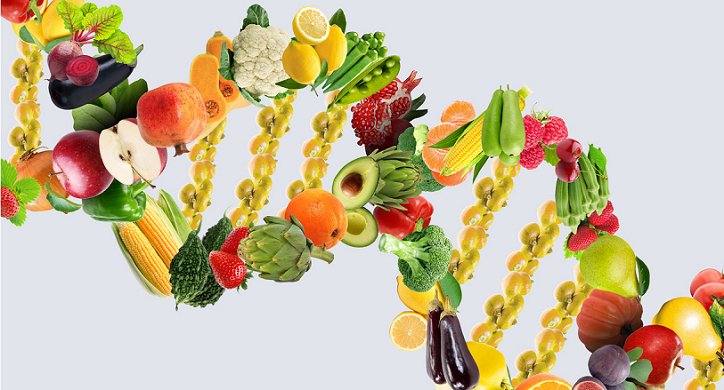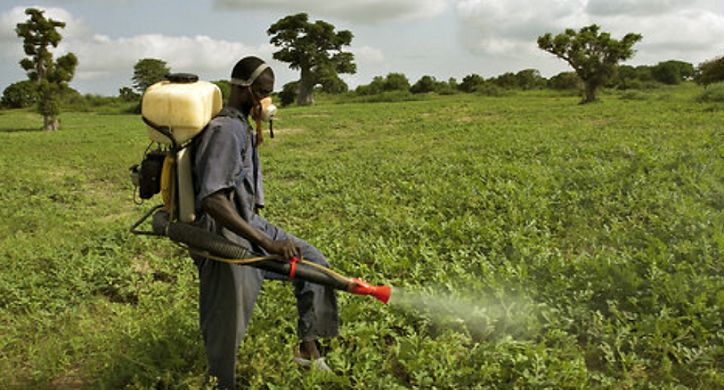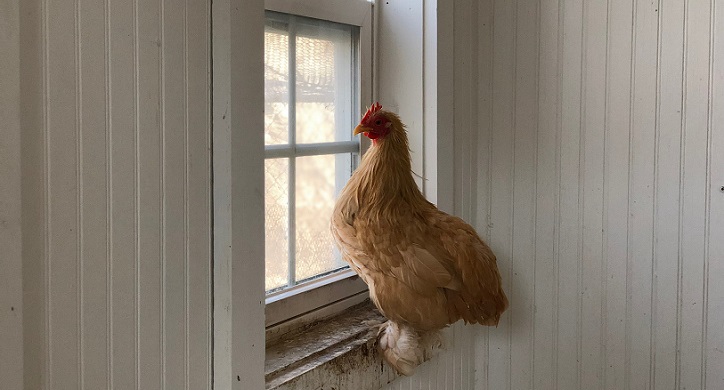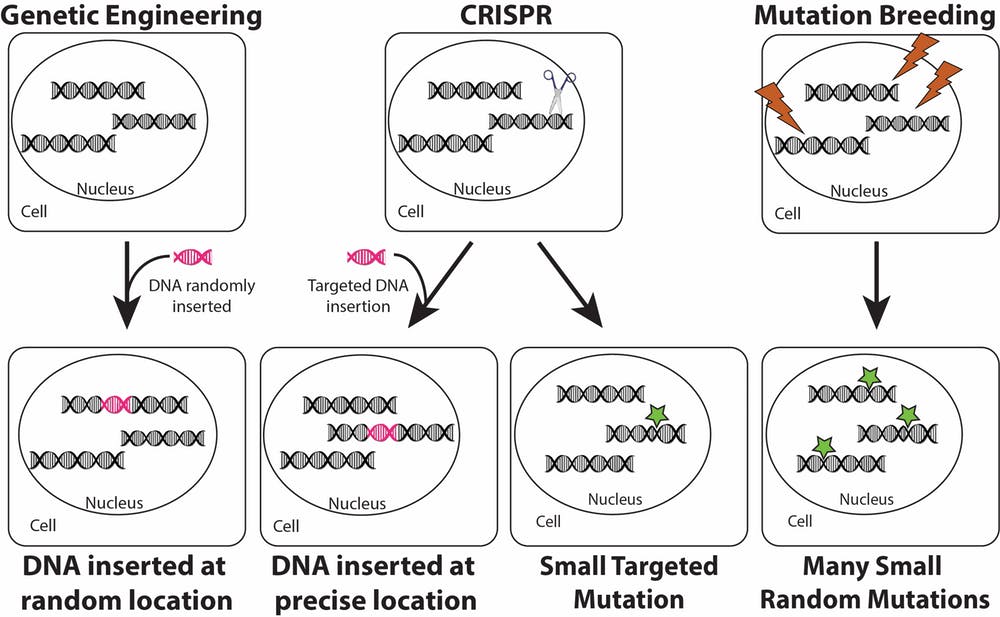Editor’s Note: These days, it feels like a challenge to find stories of unity and empowerment. So we feel very honored and proud to present our readers with these uplifting stories of three African women farmers who not only challenge the status quo, but have dramatically improved the well-being of their families, their countries…and beyond.
In sub-Saharan Africa, smallholder farmers make up 80% of all farms, with women comprising at least half of the work force. However, a pervasive gender imbalance exists here, with men dominating the industry and given opportunities and resources their female counterparts can only dream of. Motivated by the stories of their mothers and their own experiences in rural Africa, these three inspiring women, Ruramiso Mashumba, Slyvia Tetteh, and Sussana Phiri, have created a better life for themselves, their families, and all women farmers through their educational and empowerment efforts.
From Ghana to Zimbabwe to Zambia, here are the stories of our farmers.
 These are the stories of Ruramiso Mashumba, Slyvia Tetteh, and Sussana Phiri, exemplary women who have changed the face of farming in Africa. Together, they unify their voices through their Facebook page, Women Who Farm Africa, which shares resources, experiences, and information to empower women around the world. They take pride in Africa’s culture of leaving no one behind by educating women on preventing food insecurity and encouraging their role in strengthening the local and global economies.
These are the stories of Ruramiso Mashumba, Slyvia Tetteh, and Sussana Phiri, exemplary women who have changed the face of farming in Africa. Together, they unify their voices through their Facebook page, Women Who Farm Africa, which shares resources, experiences, and information to empower women around the world. They take pride in Africa’s culture of leaving no one behind by educating women on preventing food insecurity and encouraging their role in strengthening the local and global economies.
These women believe that “closing the access gap between men and women farmers would increase agricultural productivity by 2.5 – 4% in developing countries – thus reducing hungry people by 150 million. The result is a thriving community, country, and world.”
Ruramiso Mashumba, CEO & Founder, Mnandi Africa

I was born in the capital city of Zimbabwe, Harare. My mother worked in the rural areas. I remember when we were younger, she used to sit us down and tell us about the women she worked with in agriculture. Many of times they couldn’t afford to send their children to school if there was a drought in the country. The women worked tirelessly day in and day out to earn just a few dollars.
From that age, I made up my mind that I, too, want to work in supporting women in rural communities.
When I was 14 years old, my dad bought a farm and I was moved to a school next to the farm that had a focus on agriculture. This is where I learned about commercial agriculture and the power it had to transform the rural economy by transforming lives of farmers. I decided to further my studies at school and receive a diploma. My experience wasn’t easy. The school was not ready for women. They didn’t have a uniform for us. I had to wear khaki shorts, shirt and long knee-length socks as there was no uniform for girls.
For two years, I studied agriculture at my school. Throughout the entire time, I was bullied. They called me a boy because of my uniform. I remember the boys would pull my chair and laugh at me every day.
Despite how difficult it was, I was determined to make sure I didn’t give up. I felt I must persevere because I was an example for little girls in my school who were younger than me. I wanted to show them you can achieve anything, even when the odds are against you, if you put your mind to it. So I made sure I studied hard.
After two years, I graduated third in my class out of fifty students. I’m happy to report the two people above me were also girls.
We stuck together and yes, we did persevere.
I then went on to further my education in the UK. I remember my first day on a British farm. These farmers were so cool! They had tractors, combine harvesters – worlds apart from the women my mother described in her story who farmed with manual tools and torn clothes.
After I graduated, I decided to return to Zimbabwe. My goal was to change the face of my country’s agriculture. I was encouraged and motivated. I wrote a business plan.
I remember the day I finally got an appointment to see my bank manager. He was dressed smartly in a pin striped suit and looked very important.
I sat down anxiously and presented my proposal. After what felt like a lifetime, he inhaled and said, “Young lady how old are you?” I replied 25 years old. He said, “Hmm…do you have collateral?” I replied, “No, just my University degree.”
He replied, “Soon you will be married and what will that mean for our money? Hmmm, unfortunately, we are unable to assist you.” I went home in tears.
I sat down with my parents crying. My mother got up, got a box, and took out her savings she had put aside to buy a car and said, “My girl, you can do anything as long as you put your mind to it. Now, go and conquer the world.”
That year, I planted 1 hectare of cabbages, oilseed vegetables, and king onions. I used the knowledge I had learned at university that farming is a business and within one month, I was already selling, and my product was very successful.

The reason for my success was because of the education I gained not only in practical farming, but also business management, which included modules like how to secure markets.
As a result of my high-quality products, the next year I got my first big break. My company was contracted by a local producer to grow snap peas for them to export into the EU and became their first woman grower, as well as their first grower younger than 30 years old.
The company had seen proof from the quality of my current crop that I was competent to produce high-quality product for them to export.
I have since shared my story and inspired other young ladies in rural areas, as well as in the urban areas. I tell them that agriculture is male-dominated, but women farmers can and should stand shoulder to shoulder with men.
Together, we can do more. Together, we can change the image of the continent and we can feed the world.
Today, I am the first woman chairperson of the Zimbabwe Farmers Union youth. I have represented women in ag across the world by sharing not only my story, but also the stories of the many women food producers who need access to education in agriculture, technology, and finance.
A lot of people see me today winning awards, traveling the world, farming with tractors, working with planter and center pivots, and think I have arrived.
In many ways I have, but honestly, as a farmer I am still faced daily with army worm, increases in pests and diseases, and climate change. I understand personally how hard things are and have the education to know that there are solutions. That’s why as a farmer, I have become an advocate for women in science.
Together, men and women can feed our growing population. Science is not moving fast enough for us as farmers. We need seeds that can adapt to today’s challenges and my involvement with Cornell’s Alliance For Science is motivated by my strong belief that science needs to hurry up.
The technology is there. I conclude by this popular African saying, “alone you can go faster, but together we can go far”.
Let’s come together — farmers both men and women, scientists and innovators — to help feed the world and leave no man behind.
Slyvia Tetteh, Administrator, Chamber of Agribusiness, Ghana

My name is Slyvia Tetteh. I’m from the United States of Africa; specifically, Ghana.
Famous Ghanaian educator Dr. James Kwegyir Aggrey famously once said: “If you educate a man, you educate an individual. But if you educate a woman, you educate an entire nation”. I believe this to be true. I want to share with you why I’m dedicating my life to empowering the women farmers of Africa.
My passion for empowering women began with my mother, Lawrencia Larbi. Despite so many obstacles, my mother had a dream of completing her education. Unlike here in America where families live on farms, in Africa our farms are usually located far away from our homes, and you must travel by foot because the paths are too narrow for vehicles. My mother would wake up every day at 4am. She would do this to help her parents feed the family and to raise money for her education. After putting on her school uniform, she would walk one hour to work on our family farm.
After working for several hours, she would then walk upwards of two hours with her mother to the market. There, they would sell our farm produce, and sometimes banana leaves. My mother did this every day. Only then did she depart for school. Unfortunately, some days it took hours before she and grandma could sell any of our farm produce. Often, by the time they made enough money, morning classes had already ended. Sometimes they did not sell anything until midday. By then, it was already too late for my mother to go to school. My mother was pressed between a rock and a hard place.
She was the youngest in her family. Her brother and sisters had found this schedule impossible to maintain. She had worked so hard to try to finish school, but eventually reality hit her. It was literally and physically impossible to follow the daily routine and achieve academic success. With no other options, she had to marry early and start a family, just like generations of women before her.
While she was being educated, my mother dreamed of becoming a lawyer and eventually a Legislator who served her nation. But with no support financially, and unable to achieve an education, my mother had to give up her dream.
My mother was seventeen when she got married.
No one should give up their dream at seventeen years old. My mother was determined to give me and my sisters the opportunities she didn’t have. And she did. She didn’t always have the money to keep us in school. But despite the fact that she didn’t finish school, she remembered everything she had learned. When we couldn’t afford school, she used her knowledge to homeschool us. I believe my mother was an exceptional woman, but in terms of what she did with the education she had, she was not atypical.
In my country, if you educate a father, he is expected to take his education out of the home and into the workplace to earn money for his family. A woman’s role is to stay home with her children. When mothers are educated, they keep their education in the home and use it to educate their children. If you educate a woman, you educate her children, and by extension, her community. A nation of educated women is an educated nation.
Out of 80% of women farmers with children in the 1990s, I’m one of the lucky ones to obtain a higher education. I earned my Bachelor’s Degree in Economics and Information Studies. My mother’s hard work gave me the opportunity to stand on this platform before you here today. This is why I work so hard to help other women. My mother’s unwavering dedication to educate me drives my passion.
Today, I educate women – I work with women farmers so that they can farm successfully and more easily using modern agricultural biotechnology. I do this because I believe if you educate a man you educate an individual; but if you educate a woman, you educate an entire nation. Our male counterparts also have challenges, yet the current system advances men. Men hand their farms down to their sons from generation to generation.
Therefore, only less than 20% of agricultural land in the world is owned by women farmers. Because men own their land, they have the collateral to secure loans to buy machinery, which allows them to scale their farming.
Meanwhile, so many women are still farming with manual tools.
Research has shown that women farmers produce 70% of food found on the continent, and yet 5 million people die of hunger every year. 5. Million. People. To be able to feed the continent with the expected population increase of 1 billion, things must change. Women must have the tools they need to farm more efficiently, maximizing output on every inch of farmland. Strong policies must be put in place.
The only way to bridge this vast gap of inequity is to educate women. Women Farmers Must. Be. Empowered. Equally. In order to increase yields and achieve sustainable growth, women must be educated about agricultural biotechnology and have access to other available breakthrough technology. Only then will women become productive, independent, and financially stable. Families with educated women are empowered to provide for themselves. Unlike my mother, these families can realize their dreams. There is no reason we can not empower the women of Africa to empower themselves. We. Can.
And when this day comes, we will be able to say the following: We have educated women. We have educated an entire nation. And the world IS a better place.
Sussana Phiri, Farmer & Advocate of Zambian Agriculture

I am Sussana Phiri and I am from Zambia. Chilanga is my hometown. Zambia has abundant arable land, many water bodies, and hardworking women. Zambia is home to a vibrant mix of cultures and is also widely considered to be one of the friendliest and most welcoming nations in the world.
In America, you’re either a farmer, or you’re not. It’s not that simple where I come from. In my country, we are all farmers. When I was little, my father made small farming tools for me and my siblings. They were cute. We weren’t doing much, but it was our introduction to farming being a part of the fabric of our lives. We farmed during the rainy season so we had enough maize to feed our big family through the next year.
My mother always used to say “pang’ono pang’ono ndi mtolo,” translated it means: bit by bit causes a heap.
Although we didn’t have endless supplies of food, we all worked together, bit by bit, to ensure we never went hungry. I am so thankful. No child should ever go hungry. Like many people in my country, there were early mornings, long days, and late nights. All day, every day, every year. By the time I was 22 years old, I was studying remotely to earn my degree in education, while farming my family’s land and also teaching pre-school.

Seeing children I worked with suffer because they did not have enough to eat was painful. Despite being hungry, these children worked hard and went to school every day. Theirs is a difficult yet inspiring story, but that is not the story I want to share with you.
I want to share a practice in my country which hurts me, but inspired me to make change.
I want to tell you about a practice called mashanga – a practice which taught me to question what is not right and think outside of the box for solutions. After the rainy season, we wait for the maize to dry. Once it dries, my family harvests it. Mashanga is what happens next, but it shouldn’t happen at all. After Harvest season, women with little babies on their backs would ask for permission to go on our land. We would grant it and they would walk through the field, looking for any grain we had accidentally left behind. They would walk our field for hours, hoping to find any scraps we left behind, and then they would go to other fields after that.
Mashanga is considered normal in my community. Mothers with little babies on their backs, looking for scraps.
This practice made me realize many things. First, in order to live in a better world you must question the world you’re in. Second, just because things have always been done one way, it does not mean they are right, fair or just. And finally, there can be better ways to do things than the way we have always done things. We must question what we think is normal to create change. And if we are to feed every hungry child, we must question what that looks like.
In Zambia, women farmers comprise over 70% of the farming labour, yet they do not have access to information on how to farm better beyond just thinking farming is a way of life.
We also do not have access to technology that would reduce labor while providing greater yields. Women’s work is not valued as it should be given the majority of labor we provide.
We can question this. It should not be normal. No. Things must change. Women farmers in Africa are feeding the African continent even under unfavorable conditions. But it is not enough. 1 in 4 children go undernourished everyday. Now imagine the year 2050, when Africa’s population is projected to have 2.4 billion people. We cannot move forward accepting things as they have always been. This is not sustainable.
pang’ono pang’ono ndi mtolo… bit by bit causes a heap.
I am a twenty-five year old who is working for that heap of change.
Change does not have to happen overnight, but it can and we must work bit by bit to cause a heap.

Today, I am a co-founder of the Women Who Farm Africa campaign. Women Who Farm believes that if we empower women farmers in agribusiness, agricultural technologies, and communication, we can feed the world in 2050.
Whether you are a business expert, scientist, communications expert, farmer, or policy maker, you can contribute a bit to create a heap of food for all of us.
Bit by bit, we can create change together. It’s time for a new normal, one that empowers women.
It’s time for a heap of change, a heap of change that feeds the world.















 Alternatively, chronic inflammation, or inflammation that lasts for too long like heart disease, and obesity, can be harmful. Cortisol works the same way! When the levels of your stress hormone do not regulate, and don’t decrease after a stressful event has occurred, they remain too high. And if this happens for too long, it can be damaging and stressful on the body.
Alternatively, chronic inflammation, or inflammation that lasts for too long like heart disease, and obesity, can be harmful. Cortisol works the same way! When the levels of your stress hormone do not regulate, and don’t decrease after a stressful event has occurred, they remain too high. And if this happens for too long, it can be damaging and stressful on the body.





 As we look to the future of what life will look like after COVID-19, we can’t wait to get back to our favorite corner bistro to get our hands on that famous burger or specialty dessert that we have been missing for months.
As we look to the future of what life will look like after COVID-19, we can’t wait to get back to our favorite corner bistro to get our hands on that famous burger or specialty dessert that we have been missing for months. Helping to mobilize the community is a simple, effective way to show your support for restaurants outside of donations. If you are financially struggling, this is a costless way to lend a hand! Something you can do right now is to take a look at the handles we have included above in our Relief Funds section and consider following these organizations. That way, you can show your support by raising awareness and stay up-to-date with initiatives and efforts they are working on.
Helping to mobilize the community is a simple, effective way to show your support for restaurants outside of donations. If you are financially struggling, this is a costless way to lend a hand! Something you can do right now is to take a look at the handles we have included above in our Relief Funds section and consider following these organizations. That way, you can show your support by raising awareness and stay up-to-date with initiatives and efforts they are working on.
 China has increased their agricultural imports as they come out of COVID. For the first six months of
China has increased their agricultural imports as they come out of COVID. For the first six months of 










 Take me to the (chlorine) river.
Take me to the (chlorine) river. Leave the eucalyptus for the koalas.
Leave the eucalyptus for the koalas. Let’s think about this over a drink.
Let’s think about this over a drink. Social media is a powerful new communication tool. But we’ve already seen that it can sometimes go rogue and drive health experts crazy.
Social media is a powerful new communication tool. But we’ve already seen that it can sometimes go rogue and drive health experts crazy.  A punch a day keeps the COVID away.
A punch a day keeps the COVID away.

























 And it’s almost infinitely scalable.
And it’s almost infinitely scalable. The rings are made from the fibrous material that is left out in wheat fields after harvest, which is typically either composted in the field, burned, or sold as cattle feed. It’s a byproduct of the food and beverage industry, that E6PR is using to develop packaging for those products down the line.
The rings are made from the fibrous material that is left out in wheat fields after harvest, which is typically either composted in the field, burned, or sold as cattle feed. It’s a byproduct of the food and beverage industry, that E6PR is using to develop packaging for those products down the line.





























 Russell and Brandy work hard to make a go of it in the demanding world of cattle production. It’s hard work keeping tabs on the cattle 24/7, protecting them from predators, and doing it all in a way that preserves the delicate balance that protects the natural resources they and their predecessors have relied upon for more than a century. It’s a rugged life made even more so by dealing with desperate immigrants passing through.
Russell and Brandy work hard to make a go of it in the demanding world of cattle production. It’s hard work keeping tabs on the cattle 24/7, protecting them from predators, and doing it all in a way that preserves the delicate balance that protects the natural resources they and their predecessors have relied upon for more than a century. It’s a rugged life made even more so by dealing with desperate immigrants passing through.




























 By 1933, Joe’s plan for a one-stop shop was in motion, carrying staples like butter, pickles, and donuts, in addition to his renowned meat selection.
By 1933, Joe’s plan for a one-stop shop was in motion, carrying staples like butter, pickles, and donuts, in addition to his renowned meat selection.




 In the long run, Heinen’s believes that their consumers will appreciate transparency in all that they do, because being a boutique family business puts them in the unique position of connecting with not only their associates to address their needs, but their loyal customers, too.
In the long run, Heinen’s believes that their consumers will appreciate transparency in all that they do, because being a boutique family business puts them in the unique position of connecting with not only their associates to address their needs, but their loyal customers, too.









































 This was true for my stepmother’s father and uncle who were identical twins – obviously with the same DNA. Both Paul and Uncle Art have/had a gene that made them prone to heart disease. In 1998, they both had open-heart surgery. Afterwards, Paul has continued to take care of himself with diet and exercise. He also has a lot of love in his life with two adoring daughters, grandchildren, and a girlfriend (after his wife passed away). Art, on the other hand, was not quite as zealous about a healthy lifestyle. Uncle Art died in 2010. Meanwhile, Paul is steadily smiling, living, and dating his girlfriend at 101 years old!
This was true for my stepmother’s father and uncle who were identical twins – obviously with the same DNA. Both Paul and Uncle Art have/had a gene that made them prone to heart disease. In 1998, they both had open-heart surgery. Afterwards, Paul has continued to take care of himself with diet and exercise. He also has a lot of love in his life with two adoring daughters, grandchildren, and a girlfriend (after his wife passed away). Art, on the other hand, was not quite as zealous about a healthy lifestyle. Uncle Art died in 2010. Meanwhile, Paul is steadily smiling, living, and dating his girlfriend at 101 years old!










































 In Minnesota, canned vegetables were a winter staple. As a result, our parents had a large vegetable garden and our job was to plant, grow and harvest. A lot of our childhood was spent on a small family farm while our parents traveled. We would help feed the hogs, milk the cows, and ride horses. If we wanted chicken for dinner, we went to the barn, found a plump one, cut off its head, plucked it and got it ready for the oven.
In Minnesota, canned vegetables were a winter staple. As a result, our parents had a large vegetable garden and our job was to plant, grow and harvest. A lot of our childhood was spent on a small family farm while our parents traveled. We would help feed the hogs, milk the cows, and ride horses. If we wanted chicken for dinner, we went to the barn, found a plump one, cut off its head, plucked it and got it ready for the oven.
 Of particular interest to my family and me is diet related to brain health. My grandmother battled Alzheimer’s and dementia for years, but because she adhered to the
Of particular interest to my family and me is diet related to brain health. My grandmother battled Alzheimer’s and dementia for years, but because she adhered to the  It’s wonderful to see options of organic and conventional produce at our market, but what matters most to me is that I buy fresh foods that will provide my family with the most nutrients. My go-to is conventional produce, but if the organic raspberries look better, or the store only has Pink Lady apples grown organically, I’m happy to get those. But it’s amazing to have a choice – and to choose healthy. Because of these choices, my one-year-old daughter is happy and thriving. And I’m grateful to always be learning more about our food system.
It’s wonderful to see options of organic and conventional produce at our market, but what matters most to me is that I buy fresh foods that will provide my family with the most nutrients. My go-to is conventional produce, but if the organic raspberries look better, or the store only has Pink Lady apples grown organically, I’m happy to get those. But it’s amazing to have a choice – and to choose healthy. Because of these choices, my one-year-old daughter is happy and thriving. And I’m grateful to always be learning more about our food system. You’ve made food plentiful, available and
You’ve made food plentiful, available and 
 “Our extension services seek to answer real-life questions,” according to Dr. Gary Bates, director of the University’s Beef and Forage Center and associate professor of plant and soil science. It’s learning for the real world, not just a classroom or a course exam or even a dinner-table discussion.
“Our extension services seek to answer real-life questions,” according to Dr. Gary Bates, director of the University’s Beef and Forage Center and associate professor of plant and soil science. It’s learning for the real world, not just a classroom or a course exam or even a dinner-table discussion.
 “We’ve built our programs around the simple idea that if our state economy is going to be healthy, we have to have a healthy agricultural sector…we want everybody in the state to be able to benefit from that. Not just the men and women who produce agricultural products…we teach people how to get the most from that system, in how they choose the right foods, how they preserve food and avoid waste, how they prepare safe meals for their families, and on and on and on. We teach everyone how important it is to make the system truly sustainable.”
“We’ve built our programs around the simple idea that if our state economy is going to be healthy, we have to have a healthy agricultural sector…we want everybody in the state to be able to benefit from that. Not just the men and women who produce agricultural products…we teach people how to get the most from that system, in how they choose the right foods, how they preserve food and avoid waste, how they prepare safe meals for their families, and on and on and on. We teach everyone how important it is to make the system truly sustainable.”







































































